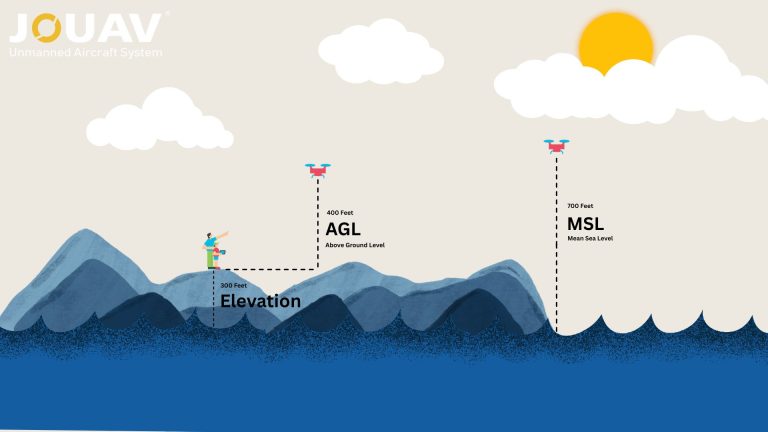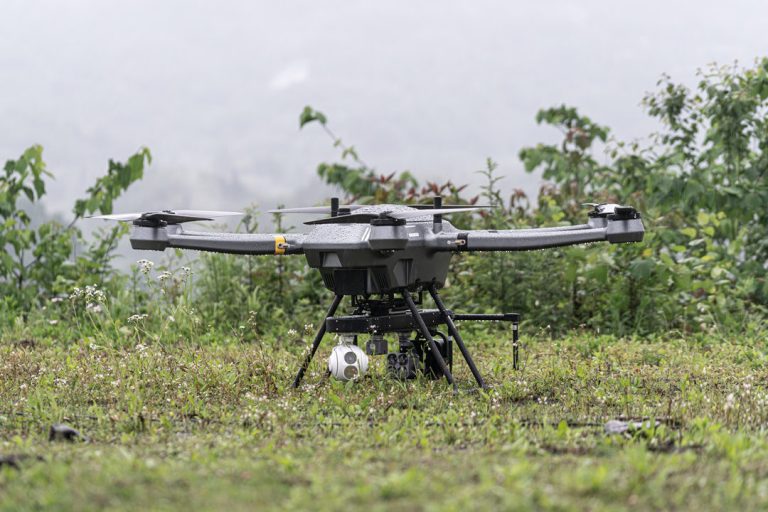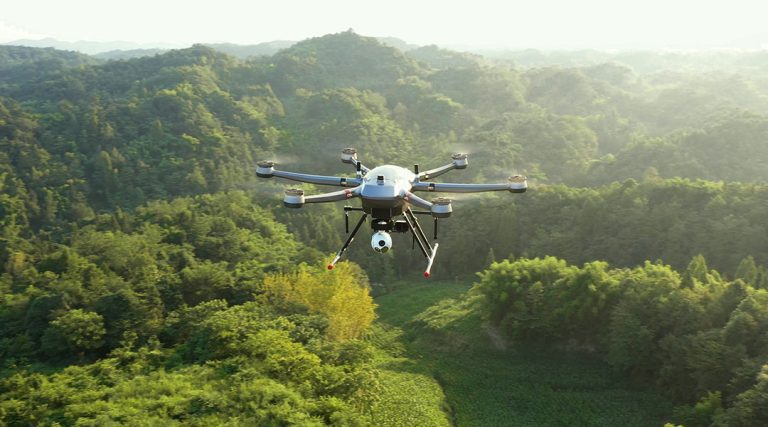A Complete Guide to Inertial Measurement Unit (IMU)
An Inertial Measurement Unit (IMU) is a sophisticated device that plays a pivotal role in tracking and measuring an object's orientation, velocity, and gravitational forces.
From space launches to the minute movements of your smartphone as you navigate city streets, and even guiding drones through the skies, IMUs are the silent navigators behind these processes.
In this comprehensive guide, we're about to embark on a journey through the intricacies of IMUs, exploring their components, types, applications, and the leading manufacturers shaping this transformative field.
Let’s get started.
What is an Inertial Measurement Unit (IMU)?
An Inertial Measurement Unit (IMU), also known as an Inertial Reference Unit (IRU) or Motion Reference Unit (MRU), packs a 3-axis accelerometer and a 3-axis gyroscope, making it a 6-axis IMU. Some also include a 3-axis magnetometer, turning them into 9-axis IMUs.

Together, these sensors measure specific force, angular rate, and magnetic fields around the device, providing a comprehensive picture of its motion.
IMUs are crucial in guiding a range of vehicles, from motorcycles and airplanes to missiles.
They play a vital role in attitude and heading reference systems, contributing to the precise control and maneuvering of these vehicles.
Additionally, IMUs are integral in spacecraft, aiding navigation in outer space for Unmanned Aerial Vehicles (UAVs), satellites, and landers.
IMUs also enhance GPS reliability in challenging environments, ensuring accurate navigation in places like tunnels or areas with electronic interference.
What Are the Components of IMU and How Do They Work?
An Inertial Measurement Unit operates by detecting linear acceleration through accelerometers, measuring rotational rate with gyroscopes, and, in some cases, employing a magnetometer for heading reference.
Each principal axis—pitch, roll, and yaw—typically includes one accelerometer, gyroscope, and magnetometer, providing comprehensive data on the object's motion and orientation in three-dimensional space.
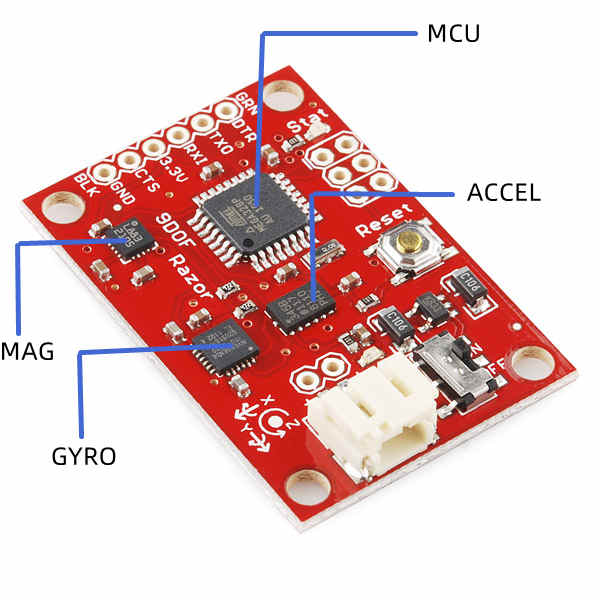
Accelerometers
Accelerometers, the nifty devices that gauge and relay specific forces, come in a variety of flavors, including mechanical, quartz, and MEMS accelerometers.
Mechanical accelerometers can achieve in-run bias stabilities less than 1 µg but are mainly used in navigation-grade applications due to their size and cost.
Quartz and MEMS accelerometers offer in-run bias stability ranging from 1000 µg to 1 µg, covering various performance categories. With high precision and stability, they are often employed in industries where accurate measurement of acceleration is essential, such as aerospace, defense, automotive testing, and geophysical exploration.
In IMUs, the accelerometers often use MEMS technology, which stands for microelectromechanical systems.
These accelerometers have a tiny mass connected to a reference system by a spring.
This setup allows them to measure how fast something is speeding up or slowing down.
They keep track of the mass's movement using capacitors, and special electronic components.
When the accelerometer is not moving, the mass creates a specific capacitance, like a baseline, showing no acceleration.
But when there's acceleration, the mass moves, and this changes the capacitance.
The accelerometer then measures this change electronically, adjusts it for accuracy, and processes the data to figure out how much acceleration is happening.
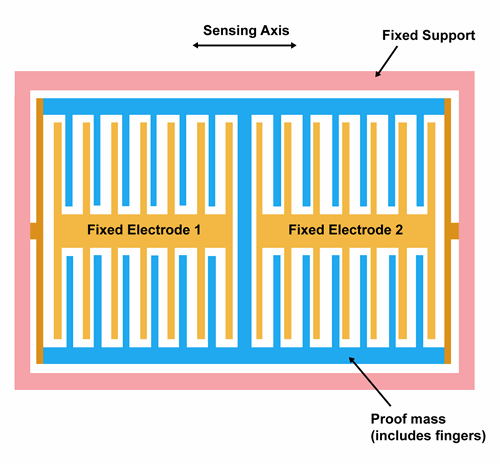
Source from siliconsensing.com
This whole process follows Hooke's law and Newton's second law, where the mass moves in proportion to the applied acceleration.
In simple terms, it's like a tiny sensor that senses how fast something is speeding up or slowing down.
Gyroscopes
Gyroscopes in an IMU measure angular velocity, indicating how fast and in what direction something is rotating.
There are various types of modern gyroscopes, including mechanical gyroscopes, fiber-optic gyroscopes (FOGs), ring laser gyroscopes (RLGs), and quartz/MEMS gyroscopes.
Quartz and MEMS gyroscopes find applications in consumer, industrial, and tactical markets, while fiber-optic gyroscopes cover all performance categories.
Ring laser gyroscopes have in-run bias stabilities ranging from 1 °/hour to less than 0.001 °/hour, suitable for tactical and navigation grades.
Mechanical gyroscopes, the highest-performing, can achieve in-run bias stabilities of less than 0.0001 °/hour.
MEMS gyroscopes, commonly used, rely on the Coriolis effect - a phenomenon describing forces when an object moves in a rotating frame of reference.
The Coriolis effect in MEMS gyroscopes is illustrated by a circular platform rotating clockwise.
If a vehicle moves northward from the center, the Coriolis effect causes it to follow a curving arc to the west.
To maintain a northward course, the vehicle applies Coriolis acceleration.
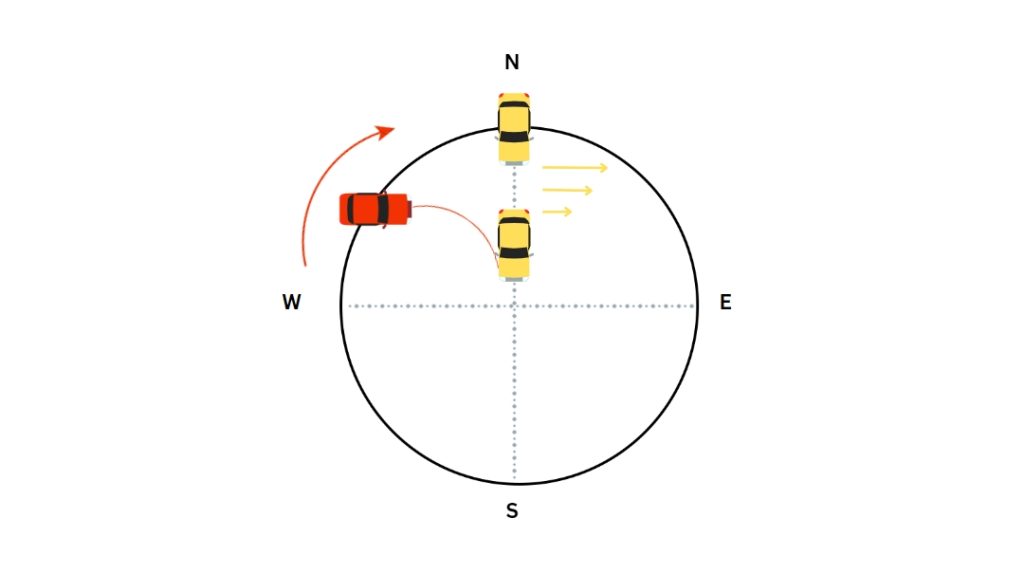
In Earth's frame of reference, the Coriolis effect causes apparent deflection due to the Earth's rotation and latitude.
For instance, launching a rocket northward results in a left-curved path due to Earth's rotation.
In a typical Coriolis MEMS gyroscope, a vibrating proof mass is attached to a reference frame, inducing a secondary vibration perpendicular to the drive axis when rotated.
This secondary vibration sensed through changes in capacitance, provides a signal proportional to the Coriolis force and the sensed rotation.
Magnetometers
A magnetometer is a device that measures the magnetic field, including its strength and orientation.
Common examples include compasses, which determine the direction of the Earth's magnetic field.
Some magnetometers measure magnetic dipole moments, which involve closed loops of electric current or pairs of poles.
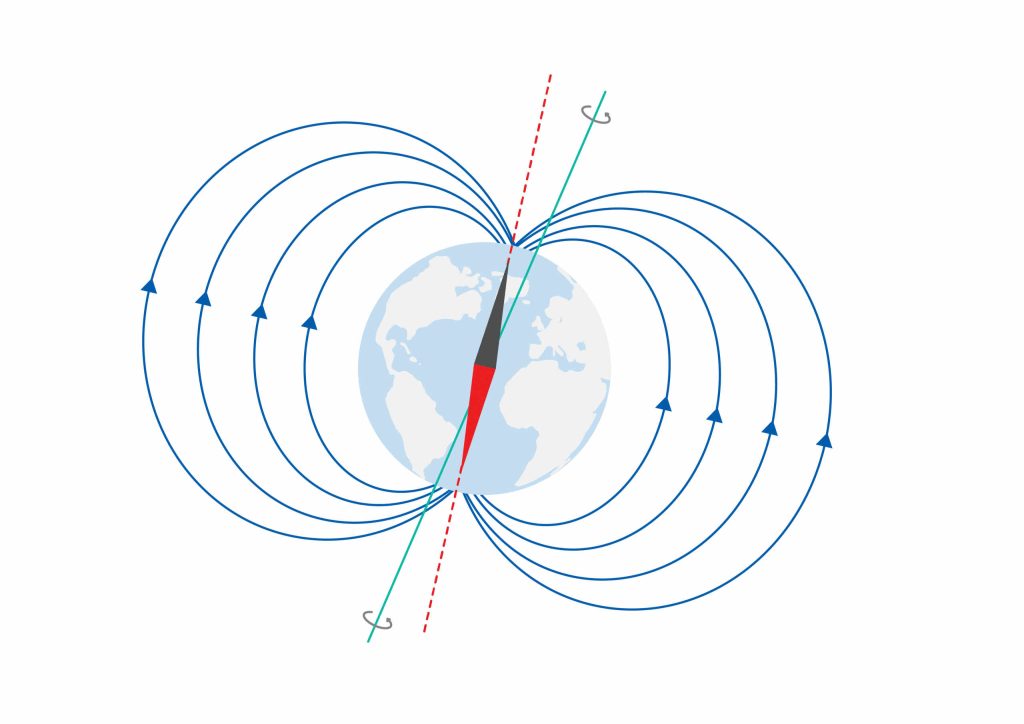
Source from advancednavigation.com
Various magnetometers work by aligning with magnetic fields, canceling forces through the Hall effect, magneto induction, or magnetoresistance.
Hall Effect Magnetometers
The Hall effect involves the generation of a voltage difference (Hall voltage) across a conductor when exposed to an applied magnetic field perpendicular to the current flow.
This principle allows magnetometers to use semiconducting materials, passing current through them and detecting changes in current due to nearby magnetic fields.
The resulting Hall voltage is proportional to the strength of the magnetic field.
Magneto Induction Magnetometers
Magneto Induction assesses how magnetized a material becomes when exposed to an external magnetic field.
This involves creating demagnetization curves, also known as B-H or hysteresis curves.
These curves measure the magnetic flux and force experienced by a material when subjected to varying magnetic fields.
Scientists and engineers use these curves to classify materials based on their magnetic properties and responses to external magnetic fields.
Magneto-Resistance Magnetometers
Magnetometers using this method assess an object's ability to change electrical resistance when exposed to an external magnetic field.
Specifically, they leverage the anisotropic magneto-resistance (AMR) of ferromagnets.
When subjected to a magnetic field, the spins of the electron orbitals in the material redistribute themselves, affecting electrical resistance.
The resistance is highest when the current aligns with the external magnetic field.
IMU Without Magnetometer vs. With Magnetometer
The inclusion or exclusion of a magnetometer in an IMU can have a significant impact on its capabilities and the type of information it can provide.
IMU Without Magnetometer:
When we talk about an IMU devoid of a magnetometer, we're essentially discussing a sensor system that relies solely on accelerometers and gyroscopes to glean information about an object's motion.
In this configuration, the IMU excels at providing fundamental data on linear acceleration and angular velocity.
Its focus lies in deciphering basic changes in orientation, with the accelerometers capturing linear acceleration and the gyroscopes tracking angular rate.
However, the absence of a magnetometer presents certain limitations, particularly in the realm of heading accuracy.
Without the capability to directly sense the Earth's magnetic field, determining precise heading becomes a challenge.
The system may encounter drift over time due to inherent gyroscopic errors, making it less suited for applications requiring highly accurate directional information.
In terms of applications, an IMU without a magnetometer finds its niche in scenarios where rudimentary orientation data suffices.
Moreover, it is often preferred in environments where concerns about magnetic field interference are pronounced.
IMU With Magnetometer
Conversely, an IMU equipped with a magnetometer introduces a new dimension to its capabilities, significantly enhancing the system's ability to provide accurate heading information.
The magnetometer measures the Earth's magnetic field, allowing the IMU to correct for gyroscopic drift and offer improved stability in determining orientation changes.
While this integration of a magnetometer enhances heading accuracy, it also introduces considerations related to calibration.
IMUs with magnetometers typically require calibration on the vehicle or in situ to compensate for static magnetic interference that may introduce heading errors.
Magnetometer calibration becomes a critical step post-installation if precise magnetometer heading is a requirement.
Despite potential challenges, the advantages in accuracy, especially in scenarios demanding precise heading information, make an IMU with a magnetometer well-suited for applications like navigation systems, robotics, and augmented reality.
Types of Inertial Measurement Units
Different types of IMUs, including Silicon MEMS IMUs, Fiber Optic Gyro (FOG) IMUs, Ring Laser Gyro (RLG) IMUs, and Quartz MEMS IMUs, offer unique advantages and are suited for different applications. Here's an overview:
Silicon MEMS (Micro-Electro-Mechanical Systems) IMUs
Silicon MEMS IMUs revolve around miniaturized sensors measuring mass deflection or the force required to hold a mass in place. Although they traditionally exhibit higher noise, vibration sensitivity, and instability parameters compared to FOG IMUs, ongoing technological advancements are steadily enhancing their precision.
Given their compact size, lighter weight, and cost-effectiveness, Silicon MEMS IMUs find widespread use in consumer electronics, featuring prominently in smartphones, tablets, and gaming devices for motion sensing and gesture recognition.
They are also crucial in automotive applications, aiding in vehicle stability control and rollover detection, as well as in navigation systems and advanced driver-assistance systems (ADAS). Within the field of robotics, Silicon MEMS IMUs are essential in ensuring precise movement and positioning.
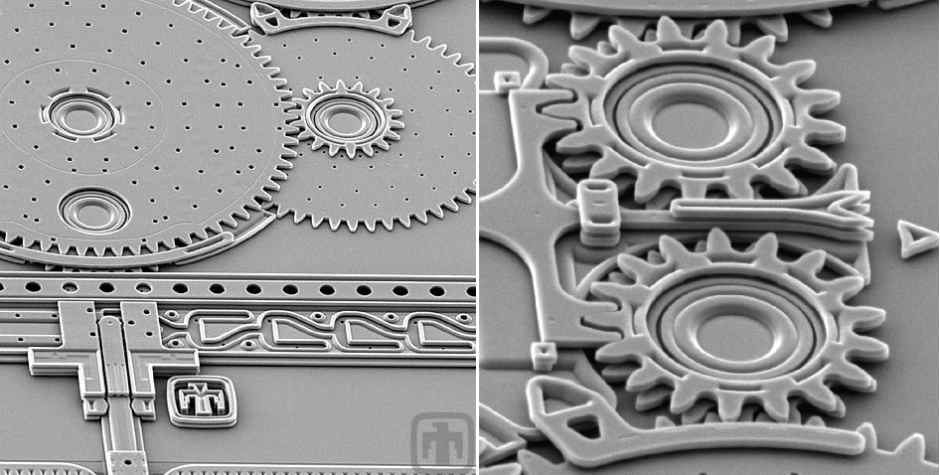
Source from findlight.net
Quartz MEMS IMUs
Quartz MEMS IMUs feature a one-piece inertial sensing element crafted from quartz, driven by an oscillator to vibrate precisely.
This vibrating quartz senses angular rate, producing a signal that can be converted into a DC signal proportional to the rate.
Known for high reliability and stability over temperature, tactical-grade quartz MEMS IMUs rival FOG and RLG technologies in SWaP-C (size, weight, power, and cost) metrics.
These IMUs have found their footing in industrial automation, particularly in robotic arms and automation systems requiring precise control and positioning.
Quartz MEMS IMUs are utilized in the field of unmanned aerial vehicles (UAVs), providing essential data for stabilization, navigation, and control during flight operations.
In the medical sector, these IMUs are integrated into medical equipment for patient monitoring and motion tracking, as well as in prosthetics and rehabilitation devices.
FOG (Fiber Optic Gyro) IMUs
FOG IMUs employ a solid-state technology where beams of light traverse through a coiled optical fiber. Recognized for being less sensitive to shock and vibration, offering excellent thermal stability, and delivering high performance in critical parameters, they shine in mission-critical UAV applications demanding exceptionally precise navigation.
While larger and pricier than MEMS-based counterparts, FOG IMUs have carved out a niche in aviation and aerospace.
They are integral to aircraft for navigation, attitude control, and stabilization, as well as in space exploration missions for maintaining precise orientation. Additionally, FOG IMUs find application in the defense sector, where they are employed in military aircraft, vehicles, and missiles for navigation and targeting purposes.
RLG (Ring Laser Gyro) IMUs
RLG IMUs operate on a similar principle to FOG IMUs but replace the coiled optical fiber with a sealed ring cavity.
Acknowledged as the most accurate option, RLG IMUs also bear the tag of being the costliest and typically larger compared to alternative technologies.
RLG IMUs find their niche in high-performance navigation systems.
They are extensively used in aircraft and ships, providing precise control over orientation during maneuvers.
In military applications, RLG IMUs are crucial components in tanks, armored vehicles, and precision-guided munitions, contributing to accurate targeting and missile guidance.
Advantages of Inertial Measurement Unit
Inertial Measurement Units have gained widespread use in various applications due to their numerous advantages, making them a preferred choice in many fields. Some of the key advantages include:
- Compact and light design: One standout feature is their compact and lightweight design, making them particularly well-suited for technologies where size and weight matter, such as in the development of drones, robots, and wearables. The portability and unobtrusiveness of IMUs enhance their integration into devices without compromising overall form and functionality.
- Versatility in different environments: Unlike some navigation systems reliant on GPS, IMUs can seamlessly operate in GPS-challenged environments, including tunnels or indoor spaces. This adaptability makes IMUs a reliable choice for scenarios where consistent navigation is essential, regardless of the surroundings.
- Continuous measurements: The continuous measurement capability of IMUs is a standout advantage, especially in dynamic scenarios. Whether tracking the movement of a vehicle or an individual, IMUs excel in providing real-time data. This feature is invaluable in applications ranging from sports tracking to vehicle navigation, where the need for instant and precise information is paramount.
- Cost-effectiveness: In comparison to alternative navigation systems, IMUs are relatively affordable. This economic aspect contributes to their widespread adoption, particularly in consumer electronics, where cost-efficient production is a key consideration for market competitiveness.
Disadvantages of Inertial Measurement Unit
Despite their many advantages, IMUs also exhibit certain limitations and drawbacks that need to be considered in their application:
- Drift over time: One significant challenge is the potential for drift in measurements over time. Drift emerges as a gradual loss of accuracy in determining an object's orientation, velocity, and acceleration. This phenomenon necessitates periodic calibration to ensure that IMUs maintain precision and reliability, especially during extended usage.
- Susceptibility to noise: IMUs are also susceptible to various forms of noise, introducing potential inaccuracies in their measurements. External factors like vibrations, electromagnetic interference, and temperature fluctuations can impact data quality. Effectively filtering out this noise requires sophisticated algorithms and signal processing techniques, adding a layer of complexity to their implementation.
- Calibration requirements: Calibration emerges as a practical requirement for IMUs. This process, though essential for maintaining accurate measurements, can be intricate and time-consuming. The need for specialized equipment and expertise in calibration adds to the overall complexity of integrating IMUs into systems and devices.
Applications of Inertial Sensor
IMUs find diverse applications across various industries due to their ability to measure acceleration, angular rate, and sometimes magnetic field strength. Here are some key applications of IMUs:
Aerospace and Aviation
IMUs furnish real-time data on aircraft attitude, angular rates, and accelerations, essential for flight control systems, autopilots, and inertial navigation.
Their role extends to gyrostabilization, refining sensor accuracy, and optimizing targeting systems.
In military aircraft, IMUs contribute to radar and targeting systems, while in spacecraft, they guide orientation during critical phases like orbit insertion.
IMUs also enhance Vision Systems, ensuring aircraft stability in low-visibility conditions.
Moreover, they facilitate in-flight monitoring for real-time diagnostics and anomaly detection, promoting safety and operational efficiency.
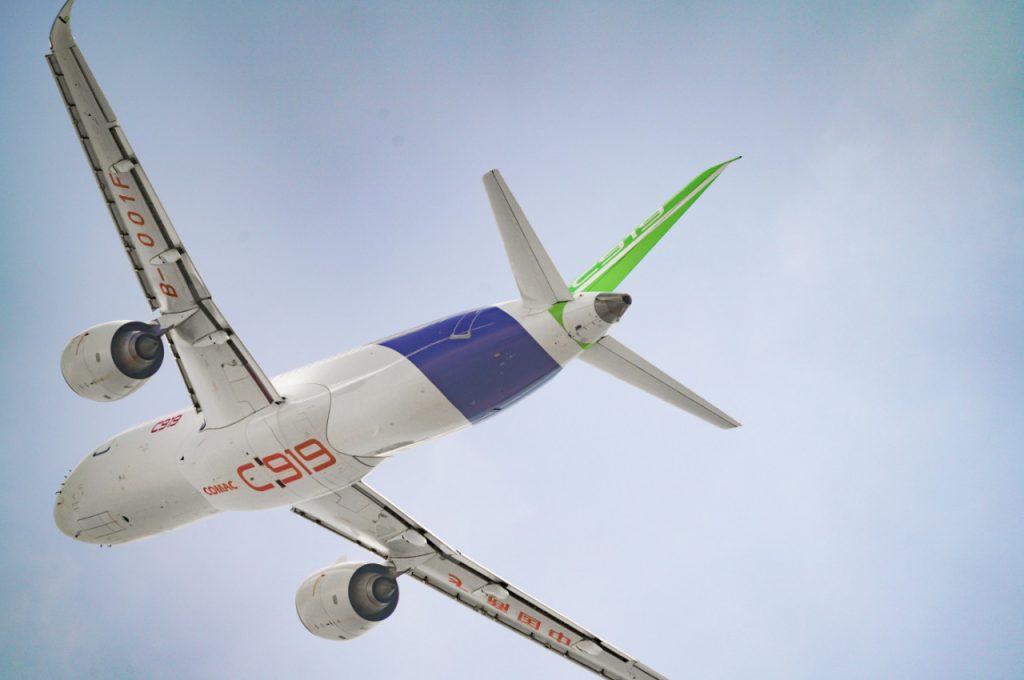
Robotics
In robotics, IMUs serve a pivotal role in enhancing dynamic motion control.
IMUs provide real-time data on acceleration and angular rates, enabling robots to navigate, interact with their environment, and execute tasks with increased precision.
These units contribute to the overall intelligence and responsiveness of robotic systems by offering essential information about their spatial orientation and movement.
Integrating IMUs into robotic platforms facilitates improved path planning, obstacle avoidance, and manipulation of objects, ultimately enhancing the efficiency and adaptability of robotic operations.

Virtual Reality and Augmented Reality
In Virtual Reality (VR) and Augmented Reality (AR), IMUs are instrumental in tracking and enhancing user experiences.
IMUs are integrated into headsets to precisely capture and interpret the user's head movements in real-time.
This tracking information is then utilized to dynamically adjust the displayed content, creating a seamless and immersive interaction.
Whether exploring virtual environments or interacting with augmented content overlaid in the real world, IMUs enable responsive and accurate head tracking, contributing significantly to the overall sense of presence and immersion in VR and AR experiences.
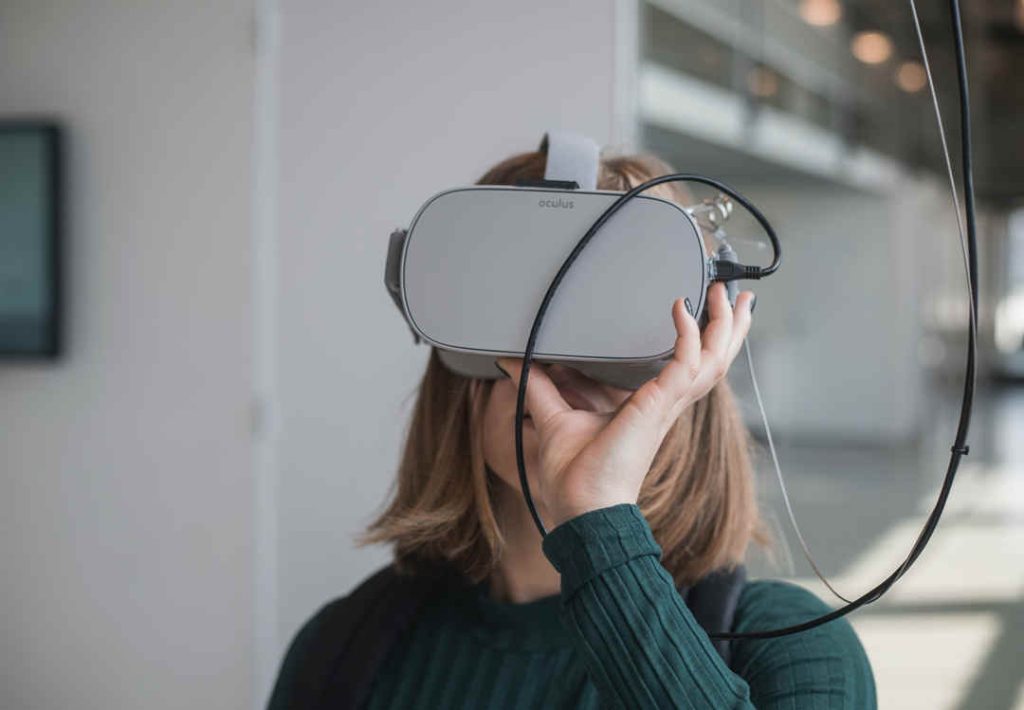
Automotive
IMUs are integral components in automotive applications that contribute to electronic stability control systems, rollover detection, and advanced driver assistance systems (ADAS).
IMUs enable precise monitoring of the vehicle's dynamics, ensuring stability during maneuvers and enhancing overall safety.
These units provide real-time data on acceleration, angular rate, and orientation, aiding in the execution of dynamic control algorithms that optimize vehicle performance and responsiveness.
Additionally, IMUs play a crucial role in enhancing the accuracy of navigation systems, particularly in situations where GPS signals may be unreliable or unavailable.
Sports and Fitness Tracking
In sports and fitness tracking, IMUs are often embedded in wearable devices.
These devices leverage IMU data to capture and analyze a user's movement patterns and biomechanics during physical activities.
IMUs precisely measure accelerations and angular velocities, providing valuable insights into an individual's performance, form, and overall athletic movements.
This data, when processed and interpreted, aids in the assessment of gait, stride, posture, and specific exercises.
The information derived from IMUs is utilized to enhance training programs, monitor progress, and offer real-time feedback to athletes and fitness enthusiasts, contributing to improved performance and injury prevention.
Moreover, IMUs are indispensable in the development of smart sports equipment, such as connected footwear and apparel, enabling a deeper understanding of athletic kinetics and facilitating personalized training regimens.

Industrial Applications
In industrial applications, IMUs are employed for machinery monitoring and predictive maintenance.
They assist in detecting vibrations, shocks, and changes in orientation, thereby enabling proactive strategies to ensure equipment reliability and minimize downtime.
Additionally, IMUs contribute to the optimization of industrial processes by providing real-time data on the dynamic behavior of machinery, aiding in performance analysis and operational efficiency improvements.
Healthcare and Biomechanics
In healthcare and biomechanics, IMUs are used for tracking and analyzing human movement.
They are integrated into wearable devices and research tools to provide detailed insights into motion patterns, joint angles, and accelerations.
These devices are instrumental in monitoring patient movements for rehabilitation purposes and conducting biomechanical research to enhance our understanding of human motion dynamics.
IMUs contribute valuable data that aids in developing personalized rehabilitation plans, assessing gait abnormalities, and advancing biomechanical research to improve clinical outcomes and enhance our comprehension of human movement kinetics.
Geophysical Exploration
In geophysical exploration, IMUs are utilized to enhance the accuracy of seismic surveying by precisely measuring ground movements and vibrations.
They contribute to the identification of subsurface structures and the delineation of potential natural resources through their ability to capture detailed information about seismic waves and ground responses.
This data aids geophysicists in creating accurate subsurface models for resource exploration and geological analysis.

Military and Defense
IMUs are vital for navigation, targeting, and ensuring stability and precision in diverse systems.
IMUs play a crucial role in missile guidance, inertial navigation for submarines, and enhancing the accuracy of military vehicles, particularly in challenging terrains.
They contribute to the overall effectiveness and reliability of defense systems by providing real-time and accurate information about acceleration, angular rate, and orientation.
Additionally, IMUs are employed in stabilization systems for weaponry, ensuring precise targeting and delivery of munitions.
Their use extends to unmanned aerial vehicles (UAVs), where IMUs facilitate stabilized flight and accurate navigation for surveillance and reconnaissance missions.
In the context of military and defense, the robust and dependable performance of IMUs is paramount for mission success and strategic operational capabilities.
Consumer Electronics
In consumer electronics, IMUs enhance user experience and enable innovative functionalities.
They are integrated into devices such as smartphones, tablets, and gaming controllers, providing essential motion-sensing capabilities.
IMUs contribute to features like screen orientation, gesture recognition, and interactive gaming controls, creating a more immersive and responsive interaction with electronic devices.
The precise measurement of accelerations and angular rates by IMUs enables dynamic adjustments and intuitive control mechanisms, significantly influencing the usability and functionality of consumer electronics.

What is the IMU in a Drone?
Now, let's talk about how IMUs work with drones.
They're a key player in keeping these unmanned aerial vehicles steady and in control, especially when dealing with challenges like strong winds or sharp turns.
IMUs are always at work, measuring acceleration and rotation, and feeding instant data to the flight control system.
This quick feedback ensures that the drone flies smoothly and stays under control.
IMUs also make some cool things happen like precise station-keeping and autonomous waypoint following.
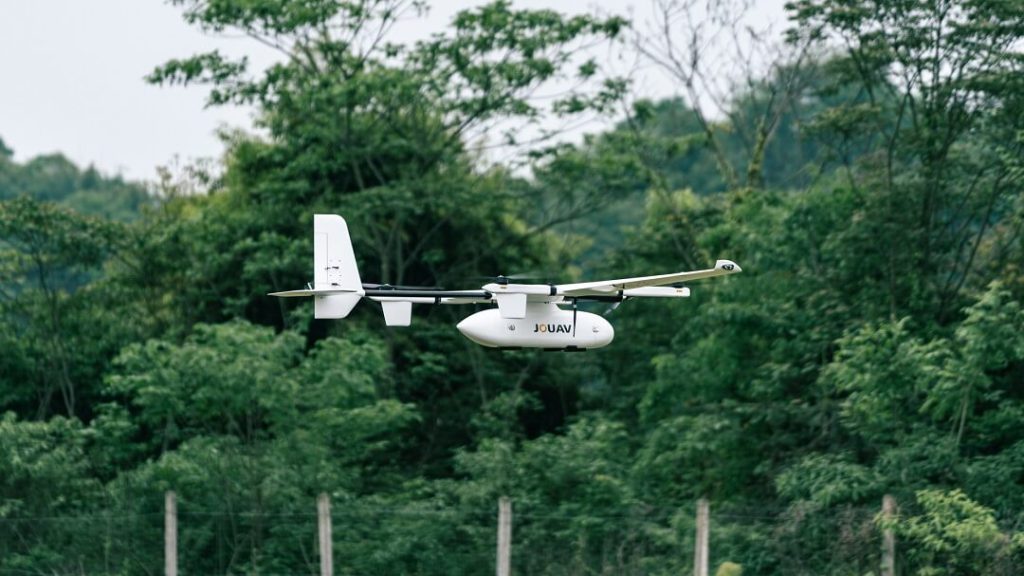
The CW-15, a VTOL drone created with IMU capabilities
Basically, this means drones can hold a position or follow a set route all by themselves.
This feature is a big deal for tasks like surveillance, mapping, and deliveries.
And there's more - IMUs provide data for fancy systems like Attitude and Heading Reference Systems (AHRS) and Inertial Navigation Systems (INS).
AHRS gives real-time info about which way the drone is pointing, and INS takes it up a notch by figuring out both the direction and exact position.
This detailed data is super important for making sure the drone navigates accurately and stays under control.
The number of inertial measurement units (IMUs) on a drone can vary based on its design and purpose.
Many consumer drones, especially smaller ones, often have a single IMU to keep costs down. This IMU typically contains sensors such as accelerometers and gyroscopes to measure linear acceleration and angular rate, respectively.
Larger and more advanced drones, especially those used for professional or industrial purposes, like JOUAV CW-15, may have multiple IMUs for redundancy and improved accuracy.
Redundancy is important in case one IMU fails, as it helps ensure the drone can still operate safely.
Accuracy in IMU Sensor Data
Accurate sensor readings form the backbone of any Inertial Measurement Unit, ensuring the provision of reliable data by closely aligning with true values.
IMUs excel in providing accurate measurements of static sensor orientation and angular velocity, with accuracy gauged through mean error, absolute mean error, standard deviation error, and correlation.
Let's delve into some concrete accuracy measurements for IMUs:
- Static Sensor Orientation: Accurate within 0.6° and precise within 0.1°
- Angular Velocity: Accurate within 4.4° per second and precise within 0.2° per second
- Joint Angles: Accurate within 0.47 to 3.9 degrees
- Foot Orientation: Bias of 0.4 ± 3.8° and precision of 3.0 ± 1.8°
Now, let's explore how we can improve IMU accuracy:
Memory Effect and Drift
In some accelerometers and gyros, a memory effect manifests, inducing unpredictable drift in the zero value with sudden movements.
Left unaddressed, this drift significantly impacts inertial navigation over time.
The remedy lies in regular calibration routines tailored to the unique characteristics of the sensors.
Frequent recalibration, specific to each sensor's traits, corrects zero-offset drift.
Additionally, the algorithm design emphasizes direct measurements of acceleration and angular rate, reducing reliance on integration and consequently enhancing accuracy.
Correct Axis Alignment
For optimal performance, the linear transfer functions connecting physical motion axes to sensor outputs should ideally resemble an identity matrix.
Misalignment introduces cross-coupling, causing errors in the data.
To mitigate this, prioritizing precise sensor alignment is essential.
This calibration procedure ensures the accurate interpretation of motion, reducing the likelihood of inaccuracies due to axis misalignment.
Integration of Redundant Systems
To further boost accuracy, employing redundant systems is recommended.
The fusion of data from various sensors provides complementary information, mitigating errors and establishing fail-safe mechanisms.
In applications like agricultural precision farming machinery, combining IMUs with GPS systems corrects antenna offset induced by tractor tilting.
This redundancy not only enhances accuracy but also guarantees reliable performance even in the face of sensor limitations.
Consideration of Bandwidth
Given that different sensors possess limited bandwidth, a thoughtful selection and combination based on their specific functionalities is crucial.
In scenarios demanding real-time data, integrating sensors with varying bandwidths, such as inclinometers and gyroscopes, ensures high data rates for precise angles.
This nuanced approach aligns the sensor suite with the specific requirements of the application, resulting in heightened accuracy and reliability.
What Difference Between an IMU, an AHRS, and an INS?
It's common for individuals to encounter terms like IMU (Inertial Measurement Unit), AHRS (Attitude Heading Reference System), and INS (Inertial Navigation System).
While these terms might be used interchangeably by some, there are critical distinctions among them that can significantly impact their applications and functionalities.
IMU: Inertial Measurement Unit
An IMU, which stands for Inertial Measurement Unit, is the most basic form of an inertial sensor.
It comprises a combination of accelerometers, gyroscopes, and sometimes magnetometers.
The primary purpose of an IMU is to measure and report raw inertial data, such as acceleration, angular rate, and magnetic field strength.
IMUs are ideal for applications where only raw sensor data is required, and the processing of this data is handled externally.
For instance, in a stationary camera setup, an IMU can be utilized to determine orientation relative to the Earth's magnetic field without the need for position data.
AHRS: Attitude Heading Reference System
AHRS stands for Attitude Heading Reference System. It builds upon the capabilities of an IMU by incorporating GPS data.
Unlike an INS, an AHRS lacks a Kalman filter for sensor fusion but compensates by providing a more cost-effective solution.
The primary output of an AHRS includes attitude (orientation), heading (direction), and position information derived from GPS.
AHRS is suitable for scenarios where a pre-existing sensor fusion algorithm or filter is already in place, and users desire additional sensor data, particularly GPS-based position information.
INS: Inertial Navigation System
An INS, or Inertial Navigation System, represents the most advanced and intelligent form of an inertial sensor.
It combines data from accelerometers, gyroscopes, magnetometers, and GPS to produce a highly accurate and integrated navigation solution.
The key component in an INS is the Kalman filter, which fuses data from different sensors to provide a more precise and robust output.
INS is the preferred choice when users seek a comprehensive and autonomous navigation system.
It is capable of delivering accurate positioning information without the need for external processing.
The integration of a GPS system in an INS ensures that it can operate effectively in various environments.
Additional Features of INS: RTK and Compassing
RTK (Real-Time Kinematics): One of the unique features exclusive to INS is the capability to implement RTK.
By utilizing a base station's GPS position and transmitting corrections to the rover (robot), centimeter-level accuracy can be achieved.
This is particularly valuable in applications where precise positioning is critical.
Compassing: Another advanced feature specific to INS is compassing. This involves using two GPS positions to derive heading information.
Unlike traditional magnetometers, compassing with GPS is immune to magnetic field interference, providing a more reliable heading measurement.
How to Choose the Best Inertial Measurement Unit for Your Design?
Choosing the optimal IMU for your application demands a nuanced consideration of several key factors.
Let's delve into a comprehensive guide:
Zero Bias Temperature Hysteresis Characteristics
The zero-bias temperature hysteresis, representing the deviation in output during temperature fluctuations, is crucial for reliable IMU performance.
Consider IMUs equipped with advanced temperature compensation algorithms, such as those employing calibrated temperature sensors within the unit.
Options from manufacturers known for their precise temperature compensation technology, like Honeywell or STMicroelectronics, can be reliable choices.
Vibration Characteristics
The ability of an IMU to operate in environments with vibrations is vital, especially in applications involving dynamic motion.
Look for IMUs with robust vibration characteristics, including a wide frequency response and low sensitivity to external vibrations.
Consider units equipped with vibration isolation or filtering mechanisms to maintain accuracy in demanding conditions.
Repeated Power-On on IMU Deviation
Contrary to the ideal assumption that IMU bias remains consistent under the same external conditions during power cycles, the reality is different.
IMU bias may vary with each power cycle, impacting calibration accuracy and fusion effectiveness.
Monitoring the deviation under repeated power-on scenarios is crucial to assess the IMU's stability and reliability.
Stress on Prejudice
The behavior of an IMU during power cycling can impact its long-term stability.
Choose IMUs with minimal deviation or drift upon power-on, as this ensures consistency in measurements over time.
Units with built-in calibration routines or automated compensation for power-on effects contribute to sustained accuracy.
External Forces on Zero Deviation
External forces, such as accelerations and shocks, can introduce deviations in IMU output.
Opt for units with minimal zero deviation under external forces.
Features like shock-resistant designs, damping mechanisms, or advanced filtering algorithms can enhance the IMU's ability to maintain accuracy in the presence of external forces.
Nonlinear Factor (%Fs)
Nonlinearity, expressed as a percentage of full-scale output, indicates how closely the IMU's response follows a linear relationship.
Lower nonlinear factors contribute to better linearity and accuracy.
Choose IMUs with a low percentage of full-scale nonlinearity (%Fs) to ensure precise measurements across the entire operational range.
FAQ
How to Build an Inertial Measurement Unit?
Building an Inertial Measurement Unit involves integrating sensors like accelerometers and gyroscopes to measure and analyze an object's acceleration, angular rate, and sometimes magnetic field orientation.
The process typically includes selecting appropriate sensors, calibrating them, interfacing with a microcontroller, and implementing algorithms for sensor fusion to obtain accurate orientation and motion data.
Additionally, power management and filtering techniques may be applied to enhance the performance of the IMU. The final step involves integrating the IMU into the desired system, considering factors like size, weight, and power consumption.
How to Calibrate an Inertial Measurement Unit?
Calibrating an IMU involves a series of steps to ensure accurate and reliable sensor readings. Begin by placing the IMU on a stable surface to establish a reference point.
Next, initiate the calibration software or firmware provided by the IMU manufacturer. Follow the on-screen instructions to perform a static calibration, maintaining a stationary position for the IMU during this process.
After static calibration, proceed to dynamic calibration by subjecting the IMU to controlled movements in various directions.
This helps account for any sensor biases and misalignments. Rotate the IMU along different axes, ensuring smooth and deliberate motions. Repeat this process until the calibration software indicates completion.
If the IMU features magnetometer sensors, perform magnetometer calibration separately. Rotate the IMU in a full 360-degree motion to capture magnetic field data. Minimize interference from nearby metal objects during this step.
Finally, verify the calibration by comparing sensor outputs to expected values in a controlled environment. Make any necessary adjustments based on the calibration results. Periodically re-calibrate the IMU to account for environmental changes or sensor drift over time, ensuring consistent and accurate measurements in your application.
How to Initialize Inertial Measurement Unit?
To initialize an Inertial Measurement Unit, follow these steps:
- Connect the IMU to the appropriate power source and ensure proper electrical connections.
- Set up the communication interface between the IMU and the microcontroller or computer system.
- Configure the IMU by adjusting settings such as sample rate, filter settings, and sensor fusion algorithms based on your application requirements.
- Calibrate the IMU sensors to compensate for any manufacturing imperfections or environmental influences. This typically involves performing a gyroscope bias calibration, accelerometer bias calibration, and magnetometer calibration.
- Initialize the sensor fusion algorithm to combine data from different sensors and provide accurate orientation information.
- Implement error-checking mechanisms to monitor the health of the IMU data, such as checking for sensor saturation or communication errors.
- Verify the initialization process by checking the output of the IMU for reasonable and accurate sensor readings.
- Implement a continuous monitoring loop to regularly update and recalibrate the IMU based on real-time data and environmental conditions.
- Integrate the IMU data into your application or system for further processing or control.
- Perform additional testing and fine-tuning as needed to optimize the performance of the IMU for your specific use case.
Does the Inertial Measurement Unit Measure ROM?
IMU systems have been successfully validated, particularly in the measurement of joint angles during upper limb Range of Motion (ROM). This technology allows for a more dynamic and accurate evaluation of how different body segments move.
By incorporating IMUs, researchers, and professionals can obtain real-time data, enabling a more comprehensive understanding of joint movement patterns and angles during activities like upper limb range of motion exercises.
What is an Inertial Measurement Unit GNSS?
An Inertial Measurement Unit GNSS, or IMU-GNSS integration, refers to the combined use of an IMU (Inertial Measurement Unit) and GNSS (Global Navigation Satellite System) in navigation and positioning systems.
This integration is designed to leverage the strengths of both technologies to enhance accuracy and reliability, especially in challenging environments where GNSS signals may be degraded or temporarily unavailable.



